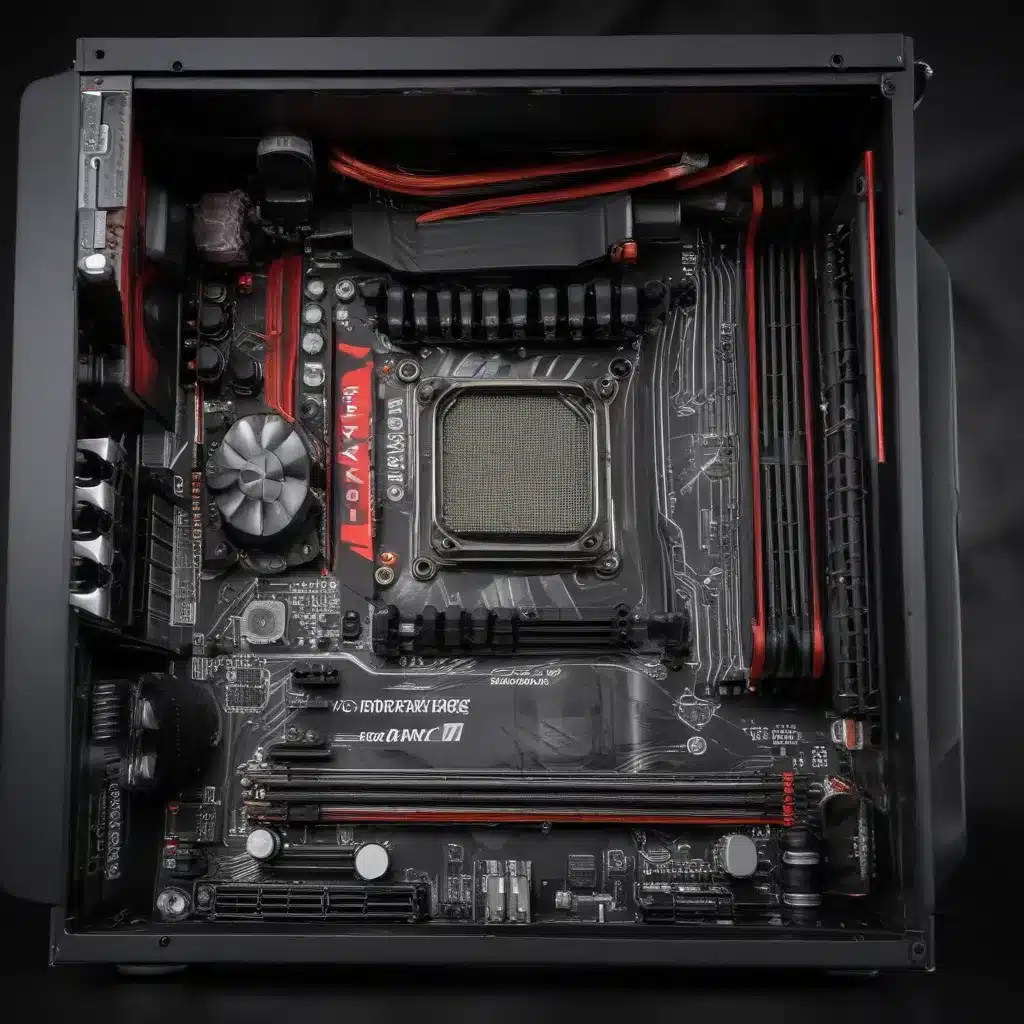
AMD Hardware Components
When it comes to building a top-tier AMD gaming rig, the key components to consider are the processor (CPU), graphics card (GPU), motherboard, memory (RAM), and storage drives. Let’s dive into the best AMD options for each.
AMD Processors (CPUs): AMD’s Ryzen lineup has consistently delivered exceptional performance for gaming and productivity. The latest Ryzen 7000 series, with its Zen 4 architecture, offers industry-leading single-threaded and multi-threaded performance. Models like the Ryzen 7 5800X3D and Ryzen 7900X3D are particularly well-suited for gaming, thanks to their generous cache sizes and optimized design.
AMD Graphics Cards (GPUs): AMD’s Radeon RX 6000 series GPUs are strong contenders in the high-end and mid-range gaming markets. The RX 6800 XT and RX 6900 XT provide excellent value, offering exceptional 1440p and 4K gaming performance that can rival NVIDIA’s offerings. The new RX 7000 series, with RDNA 3 architecture, promises even more impressive gains in both rasterization and ray tracing capabilities.
AMD Motherboards: When pairing an AMD CPU, you’ll want to choose a compatible motherboard from the AMD X570, B550, or X470 chipset families. These boards offer advanced features like PCIe 4.0, robust power delivery, and robust overclocking capabilities to unleash the full potential of your AMD processor.
AMD Memory (RAM): For an AMD-based gaming rig, you’ll want to pair your CPU and motherboard with high-speed, low-latency DDR4 or DDR5 memory. AMD’s Ryzen CPUs benefit greatly from fast RAM, with kits like G.Skill Trident Z, Corsair Vengeance, and Kingston Fury performing exceptionally well.
AMD Storage Drives: For blazing-fast storage, AMD-powered systems shine with the latest PCIe 4.0 NVMe solid-state drives (SSDs) from brands like WD Black, Sabrent, and Samsung. These drives offer read/write speeds that far outpace traditional SATA SSDs and even some older PCIe 3.0 NVMe options.
Overclocking Techniques
Unlocking the full potential of your AMD gaming rig often involves strategic overclocking. Let’s explore the key techniques for optimizing your CPU, GPU, and system performance.
CPU Overclocking: AMD’s Ryzen processors are known for their impressive overclocking headroom. Using tools like AMD Ryzen Master or BIOS-based overclocking, you can push your CPU’s clock speeds and core voltages to achieve significant performance gains. However, be mindful of thermal constraints and ensure adequate cooling to maintain stability.
GPU Overclocking: AMD’s Radeon GPUs also respond well to overclocking. Utilizing tools like AMD Radeon Software or third-party utilities like MSI Afterburner, you can incrementally increase your GPU’s core clock and memory clock speeds to extract more performance. Be cautious of power and temperature limits to avoid instability or damage.
Voltage and Frequency Adjustments: The heart of overclocking lies in fine-tuning your system’s voltage and frequency settings. Carefully increasing CPU core voltage, DRAM voltage, and GPU voltage, while monitoring temperature and power consumption, can lead to notable performance improvements. However, excessive voltage can reduce component lifespan, so it’s crucial to find the right balance.
Cooling Considerations: Effective cooling is paramount when overclocking. Upgrading to a high-quality CPU cooler, such as a beefy air cooler or an all-in-one liquid cooler, can provide the necessary thermal headroom to support your overclocked components. Additionally, ensuring adequate case airflow and GPU cooling can prevent thermal throttling and maintain system stability.
Benchmark Testing
Evaluating the performance of your AMD gaming rig is essential to ensure you’re getting the most out of your hardware investments. Let’s explore some key benchmark tests and performance metrics.
CPU Benchmarks: Popular CPU benchmarking tools like Cinebench, Geekbench, and PCMark provide valuable insights into your processor’s single-threaded and multi-threaded performance. These tests can help you quantify the gains from your CPU overclocking efforts.
GPU Benchmarks: For graphics performance, turn to benchmark suites like 3DMark, Unigine Heaven, and Unigine Superposition. These tools can stress your GPU and provide a clear understanding of your system’s gaming capabilities at different resolutions and settings.
System Performance Metrics: Monitoring overall system performance through tools like HWMonitor, CPU-Z, and GPU-Z can give you a comprehensive view of your rig’s capabilities. Track metrics like CPU and GPU utilization, temperatures, clock speeds, and power consumption to ensure your system is operating at its peak.
Comparison to Stock Configurations: When benchmarking your overclocked system, it’s crucial to compare the results to the stock, out-of-the-box performance. This will help you quantify the tangible benefits of your overclocking efforts and ensure you’re achieving meaningful performance gains.
Tuning and Optimization
Beyond overclocking, there are several other techniques and software tools you can leverage to fine-tune your AMD gaming rig for maximum performance and efficiency.
Power Management Settings: Optimizing your system’s power management settings can have a significant impact on performance and power efficiency. Utilize AMD’s Ryzen Power Plans or the Windows Power Options to strike the right balance between performance and power consumption.
Thermal Management: Ensuring your system’s thermal performance is crucial for stable and sustained operation, especially when overclocking. Monitor CPU and GPU temperatures, adjust fan curves, and consider upgrading your cooling solution if necessary.
Software Utilities and Drivers: Keeping your AMD software, drivers, and firmware up-to-date is essential for unlocking the full potential of your hardware. Utilize tools like AMD Radeon Software, AMD Ryzen Master, and Windows Update to ensure you’re running the latest and most optimized versions.
Operating System Optimizations: Optimizing your Windows operating system can provide an extra performance boost. Consider disabling unnecessary background processes, managing startup programs, and utilizing performance-enhancing utilities like Game Mode and Game Bar.
By leveraging these advanced techniques and tools, you can craft an AMD gaming rig that delivers exceptional performance, stability, and efficiency. Remember, always exercise caution when overclocking and make sure to monitor your system’s health and temperatures. Enjoy your ultimate AMD gaming experience!
For more IT-related tips and troubleshooting guides, be sure to visit https://itfix.org.uk/.












